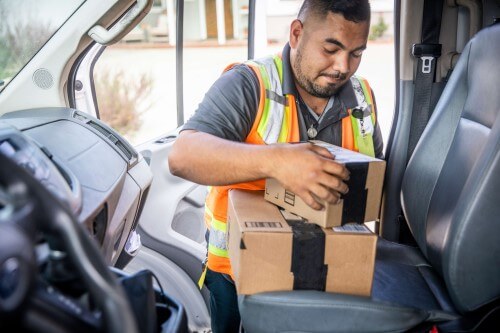- Products

Enjoy a free 30-day trial of our
data validation software.Experience the power of trusted data
solutions today, no credit card required! - Solutions

Enjoy a free 30-day trial of our
data validation software.Experience the power of trusted data
solutions today, no credit card required! - Partners

Enjoy a free 30-day trial of our
data validation software.Experience the power of trusted data
solutions today, no credit card required! - Learn more
- Pricing
- Contact Us
3 Top challenges for loyalty programs

Customer loyalty is a catalyst for retailers to grow business revenue. If you take a look at companies today that have the most rewarding loyalty programs, you could claim that they are the result of trustworthy, data-driven insights.
Retailers, like you, prioritize loyalty programs because they enable you to motivate your best customers to purchase more, empower new customers to shop with your brand, and lead to word-of-mouth marketing through a great customer experience. In other words, loyalty programs equal business growth.
Now, more than ever before, is the time to power your loyalty program with a foundation of reliable customer data. With shifting consumer shopping habits and the 24/7 at-customer-leisure shopping cycle, retailers are left scrambling to find the right messaging and incentives, while keeping up with brand name retailers.
The best-case scenario is when retailers have a layer of accurate, relevant consumer data to leverage for their loyalty programs. When correct customer addresses, emails, and phone numbers are enriched with consumer attributes, like buyer propensity, it can help you create and deliver the right message to the right place, and much more. Yet, collecting accurate data exactly what challenges retailers like you.
While loyalty programs can drive more revenue, many retailers struggle with the data-side of their operation. What are the three main obstacles to achieving a successful and sustainable loyalty program? You guessed it: They all have to do with data.
Top 3 challenges to loyalty programs
1. Too many data collection channels
Retailers have a number of customer engagement touch points, which can also be considered data collection channels. Think about all the ways you engage with customers through your website, point-of-sale, call center, mobile apps, and so on. Then, add loyalty programs onto that list and you have even more places where you capture customer data.
Too many data collection channels could lead to several disparate customer sources, poor data quality, and an overwhelmed data crew. Ninety percent of retailers say they have issues from poor data quality, according to our 2020 Global data management report.
Solution: Cutting down the number of channels you use to collect data is probably not the route you want to take because, in theory, more data is better (but, don’t forget about quality!). To solve for multiple data collection channels, think about centralizing your data collection management methods by appointing a go-to data handler and systematizing your data collection strategy across departments. Your data handler can be the point of contact for data collection, ensuring data quality practices are upheld while focusing on the long-term goal.
2. Poor contact data
Your first challenge with loyalty programs: Get the customer to sign up. Factors such as the amount of time it takes to enter in their information and how personal the information required is, all impacts the consumer’s willingness to sign up. Not enough customers signing up understandably results in a more difficult time reaching these customers. However, sign ups mean zilch if contact data is inaccurate, as that also results in the inability to reach customers.
Solution: Implement a data quality solution. Our latest Global data management report found that the biggest ways poor data quality impacts retailers are wasted resources (45%), damages the reliability of analytics (39%), and negatively impacts reputation (35%). Whether you want to use data quality for predictive analytics to optimize consumer experience or implement a data cleansing tool, like address or email verification, taking control of your data will equip you with actionable and real-time insights.
3. Not having a data-driven culture
There is a sharp correlation between increased company profits and the amount of data quality solutions that are put in place. Not emphasizing data quality in your business can cost you far-reaching consequences, such as customer engagement, loyalty, and revenue.
Solution: Data quality should be prioritized as a key business focus. Loyalty programs need to be built on a solid foundation of data, but what does a good data foundation look like?
• Cleaning your existing data.
• Consolidating and deduping records.
• Ensuring newly collected data is accurate before it enters into CRM and other systems.
Reliable, clean data represents an opportunity to better understand your customers, drive actionable insights and optimize customer or prospect experience. When loyalty programs are the key to increasing revenue, customer retention, and lifetime value, you want to make sure your data quality initiatives are up to par.
Originally posted by Shirley Zhao, 2015




